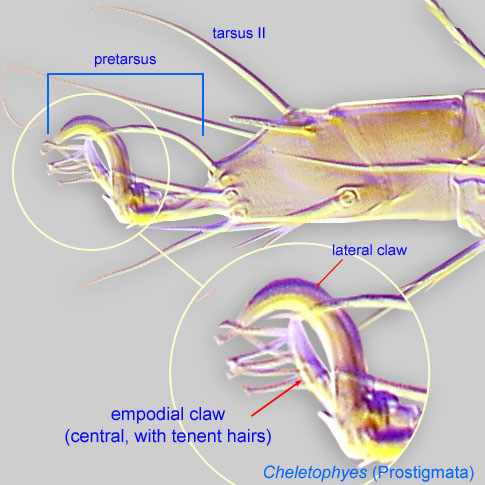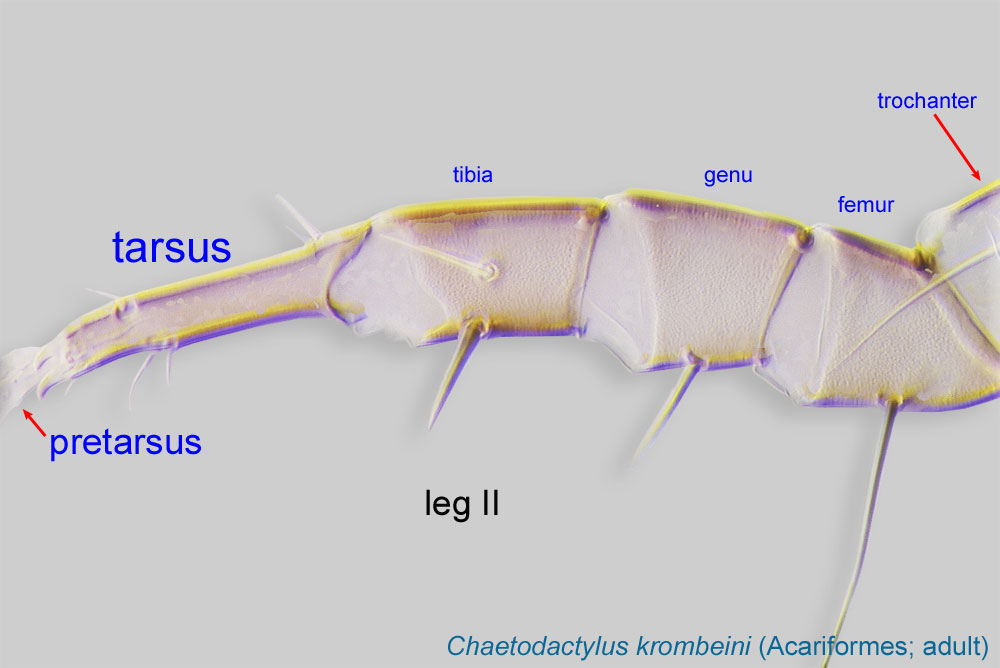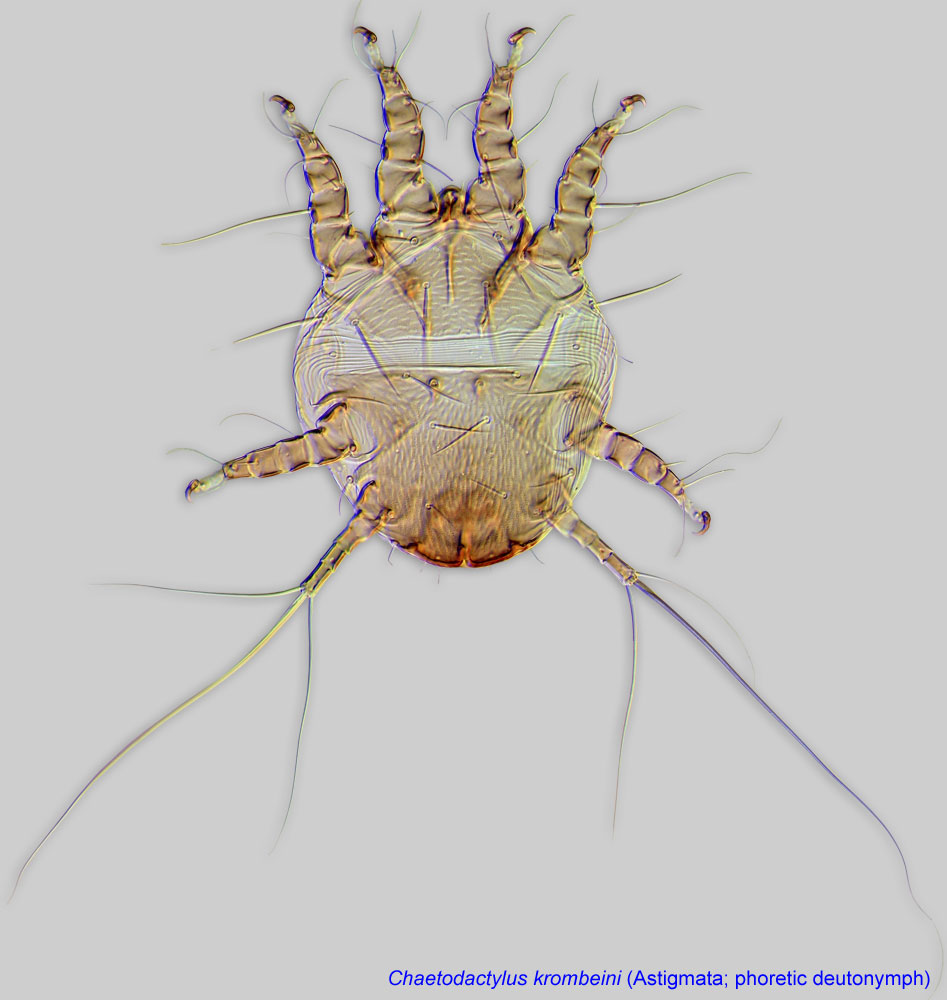disperses on bees, probably lives in nests, but details of biology are unknown
Centriacarus Klimov and OConnor, 2007
Superorder Acariformes » Order Sarcoptiformes » Suborder Oribatida » Infraorder Desmonomata » Hyporder Astigmata » Family Chaetodactylidae » Genus Centriacarus
Centriacarus turbator Klimov & OConnor, 2007
Phoretic phoretic:
Pertaining to phoresy; using another organism (i.e., a host) for dispersal to new habitats. Phoresy can be distinguished from parasitism because feeding typically does not occur during phoresy.
deutonymph: Empodial clawsEmpodial claw:
Claw-like, membranous, or pad-like structure of setal origin. Present only on the pretarsus in Acariformes. In Astigmata, it is the only claw on the pretarsus and often referred to simply as the claw. In the remaining Acariformes, may be accomanied by two lateral claws. Also known as empodium, pretarsal empodium, or central claw.
 I-III not twisted (Fig. 6). Dorsal cuticular folds of ambulacraambulacrum:
I-III not twisted (Fig. 6). Dorsal cuticular folds of ambulacraambulacrum:
The claws and empodium of the apotele or pretarsus.
I-III absent (Fig. 7). Setae p' (=q) on tarsitarsus:
Terminal segment (also known as podomere or palpomere) of legs or palps. In Parasitoformes it can be subdivided into telotarsus and basitarsus.
 I-IV present (Fig. 8).
I-IV present (Fig. 8).
A dichotomous key is available in Klimov and OConnor, 2008Klimov and OConnor, 2008:
Klimov, P. B. amp; B. M. OConnor. 2008. Morphology, evolution, and host associations of bee-associated mites of the family Chaetodactylidae (Acari: Astigmata), with a monographic revision of North American taxa. Miscellaneous Publications Museum of Zoology University of Michigan.199: 1-243..
Neotropical region
Centris (Heterocentris)
permanentpermanent:
associated exclusively with bees or their close relative, wasps; cannot live without these hosts
 disperse on wood-nesting apid bees of the genus Centris, subgenus Centris (Heterocentris) (Figs. 2-5).
disperse on wood-nesting apid bees of the genus Centris, subgenus Centris (Heterocentris) (Figs. 2-5).